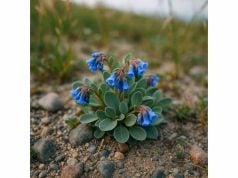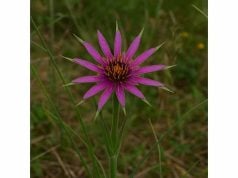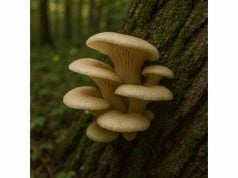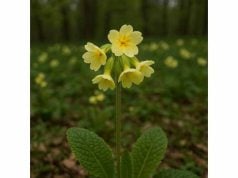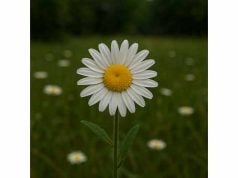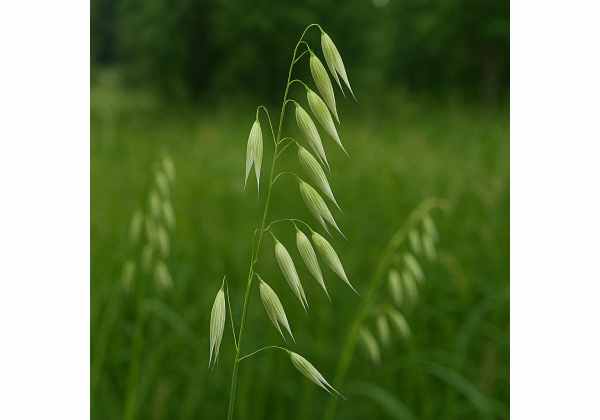
Oat grass has earned a loyal following among health enthusiasts and herbalists for its impressive nutritional and therapeutic potential. Touted for its dense array of minerals, vitamins, and antioxidant compounds, oat grass supports digestion, energy levels, skin health, and stress management. Traditional remedies highlight its soothing, restorative qualities, while contemporary research links its antioxidant properties to broader wellness applications. Whether blended into smoothies or taken as a concentrated extract, oat grass delivers a wealth of medicinal properties. In this article, we’ll explore oat grass benefits, key ingredients, and a variety of uses that could make this humble green a standout in your natural health routine.
Table of Contents
- Botanical Perspective and Growth Patterns
- Chemical Makeup and Principal Compounds
- Notable Advantages and Inherent Qualities
- Practical Uses and Essential Precautions
- Investigations and Prominent Research Data
- FAQ
Botanical Perspective and Growth Patterns
Understanding oat grass begins with recognizing that it stems from the same genus as the oats we typically see in cereals and oatmeal. Officially termed Avena sativa during its earliest developmental phase, oat grass is the young green shoots of the oat plant before they mature into the grains we recognize on grocery store shelves. This stage is when the plant’s foliage is at its nutrient-dense peak, teeming with chlorophyll, enzymes, vitamins, and minerals that feed both humans and livestock.
Taxonomy and Classification
- Family: Poaceae (the grass family)
- Genus: Avena
- Species: Avena sativa
Oats as a species trace back to regions in Europe and parts of Asia, where the climate was favorable for grasses to thrive. Centuries of domestication have refined these plants for optimized grain production, but ironically, many modern health seekers value oat grass primarily for its green shoots, rather than for the mature grains. As a member of the Poaceae family, oat grass shares a lineage with wheat, barley, and rye—though each grass has distinct morphological traits and specific nutritional profiles.
Physical Characteristics
When you see oat grass in a field or garden, it appears like a slender, upright grass that can reach heights of about a foot or two (30–60 cm) before transitioning into grain production. The leaves are narrow, long, and a vibrant green, reflecting an abundance of chlorophyll. If allowed to mature, the top of the stem eventually produces seed heads—though for nutritional harvests of “oat grass,” cutting the plant early captures the tender leaves well before seed formation.
Key markers of early-growth oat grass:
- Bright Green Color: Indicates the presence of chlorophyll and other phytonutrients.
- Soft, Juvenile Leaves: Thin and less fibrous than fully mature oat leaves.
- Mild Scent: Fresh, grassy aroma when crushed.
Growth Conditions and Habitats
Oat grass is relatively hardy, flourishing in temperate climates with well-drained soil. Moderate rainfall and gentle sunlight encourage robust growth. In agricultural settings, farmers sow oats in spring or early fall, depending on the local environment and intended harvest times. For home gardeners, oat grass can be grown in a garden bed, raised container, or even indoors under grow lights.
- Soil Preference: Light to medium loam, mildly acidic to neutral pH.
- Moisture Needs: Regular watering to maintain slight soil dampness, though avoid pooling water.
- Sunlight: At least 4–6 hours of partial to full sun daily, depending on ambient temperature.
Traditional and Global Context
Various cultures have recognized the broader family of cereal grasses for centuries. In certain parts of Europe, fresh oat shoots have historically fed livestock, thereby improving animal vitality and milk production. Over time, herbalists began to notice that human consumption of these green shoots likewise conferred a sense of calm vitality and enhanced nutrition. Although commonly overshadowed by wheatgrass or barley grass in the “green juice” movement, oat grass has carved out a niche among those who favor a gentler taste and robust array of nutrients.
In short, oat grass represents a versatile, easy-to-cultivate plant that can adapt to home or commercial growing systems. Its slender, bright leaves capture the essence of early-stage plant vitality, bursting with an array of beneficial compounds. Having explored the basics of how oat grass develops and where it thrives, we can now turn our attention to the specific chemical elements that make it a standout herbal ally.
Chemical Makeup and Principal Compounds
Oat grass might appear as a simple green blade at first glance, but it contains an impressively varied profile of active elements, each contributing to its healing properties. These substances, often referred to as phytochemicals or active compounds, can interact synergistically to deliver the broad spectrum of benefits commonly attributed to oat grass.
- Chlorophyll
Often called the “blood of plants,” chlorophyll is the pigment responsible for giving oat grass its bright green color. Chlorophyll is rich in magnesium and has been studied for its potential detoxifying and antioxidant effects. Many proponents suggest that chlorophyll can help support the body’s cleansing processes, oxygenate the blood, and even freshen breath. - Avenanthramides
Although typically associated with mature oats, avenanthramides also appear in the younger shoots. These polyphenolic compounds are known for their antioxidant and anti-inflammatory properties. Research often highlights avenanthramides in relation to skin health, citing their ability to soothe irritations. Additionally, they may help maintain healthy blood circulation by moderating inflammation. - Beta-Glucans
Beta-glucans are a form of soluble fiber that have earned a reputation for supporting balanced cholesterol levels and promoting gut health. While oats are most famous for containing beta-glucans in their grains, smaller but still valuable amounts are present in the juvenile grass. Beta-glucans can assist in creating a sense of fullness, aiding in appetite control and steady digestion. - Vitamins (A, C, K, and the B-Complex)
Fresh oat grass delivers a mixture of vitamins essential for myriad bodily functions. Vitamin A promotes healthy vision and skin; vitamin C supports the immune system and collagen production; vitamin K assists with blood clotting and bone health; and the B vitamins help with energy production, nervous system support, and cognitive function. - Minerals (Calcium, Magnesium, Potassium, and More)
The robust mineral profile of oat grass stands out to many health enthusiasts. Calcium and magnesium contribute to bone strength and muscle function. Potassium ensures proper fluid balance and supports healthy blood pressure. Iron, manganese, zinc, and other trace minerals also frequently appear, helping to fill common nutritional gaps in modern diets. - Amino Acids and Proteins
Like other cereal grasses, oat grass contains a range of amino acids, some of which are essential (meaning the human body cannot synthesize them and must obtain them from diet). These amino acids can play roles in muscle maintenance, enzyme formation, and overall metabolic health. Although the protein content may not be as high as some legumes or animal products, the presence of amino acids in an easily digestible form appeals to many people looking to diversify their protein sources. - Enzymes
During the early growth phase, oat grass possesses various living enzymes. These enzymes can support digestive processes and metabolic reactions. Consuming oat grass in a raw form—such as fresh juice—may help preserve enzyme activity. However, some of these enzymes break down when heated or processed, so timing and method of consumption are key.
Significance of Synergy
When we talk about the “synergy” of these compounds, we mean that each substance amplifies or complements the others. For instance, chlorophyll’s potential detoxifying properties can cooperate with the antioxidant effects of avenanthramides, collectively reinforcing the body’s natural defenses against oxidative stress. Meanwhile, vitamins and minerals may support overall metabolism, ensuring that other essential phytochemicals are properly utilized.
This synergy often underscores why full-spectrum oat grass supplements or fresh juices might be favored over isolated constituents. Traditional herbal wisdom champions the use of whole-plant extracts because they preserve nature’s intricate balance of nutrients.
Potential for Therapeutic Use
The combination of these compounds has led to a variety of claims about oat grass as a therapeutic agent. While some individuals rely on it for everyday nutrition, others incorporate it into regimens aiming to address specific concerns like stress management or skin irritation. It’s also noteworthy that many find oat grass gentler on the digestive system compared to other cereal grasses, although personal sensitivities vary.
Now that we’ve unraveled the chemical composition behind oat grass’s reputation, we’ll move forward to see exactly how these constituents translate into real-world health advantages.
Notable Advantages and Inherent Qualities
Stepping into the world of oat grass reveals a tapestry of qualities that have endeared this vibrant green plant to countless wellness routines. From supporting energy levels and aiding digestion to offering stress-relieving properties, oat grass appears to have much to offer. Here, let’s explore the key reasons so many people embrace oat grass as part of a daily regimen or occasional boost.
1. Energy and Vitality
Oat grass is often celebrated for its capacity to boost overall energy. Loaded with B vitamins, magnesium, and easily digestible proteins, it can help nourish the body at a cellular level. Many people who integrate fresh oat grass juice into their morning rituals report a sense of “alert calmness” that carries them through the early part of the day. The high chlorophyll content may play a part in optimizing oxygen utilization, potentially contributing to sustained energy rather than quick, jittery spikes.
- Real-Life Tip: If you’re new to cereal grasses, start with a small serving—like half an ounce of fresh juice—and gradually increase as your body adapts. Some individuals find they do best with about an ounce or two daily.
2. Digestive Ease
Compounds like beta-glucans and soluble fiber can help cushion the digestive tract, aiding smoother digestion and promoting beneficial gut flora. Those with mild digestive discomfort, such as occasional bloating or irregular bowel movements, might find gentle relief through regular oat grass use. It’s also mild compared to certain stronger detox herbs, making it an approachable option for those with sensitive stomachs.
- Practical Application: Adding oat grass powder to a morning smoothie can be a convenient way to harness these digestive benefits, offering both fiber and a range of micronutrients without a heavy or “green” aftertaste.
3. Skin-Friendly Nutrients
Skin health often mirrors what happens inside the body. Nutrients like vitamins A and C, paired with minerals like zinc, help maintain healthy skin cells and support the formation of collagen. Chlorophyll’s purifying nature may help flush out toxins that can otherwise manifest as dull or irritated skin. Additionally, the presence of avenanthramides, which have been linked to soothing effects, underscores oat grass’s potential for calming minor skin irritations or red patches.
- Quick DIY: Some individuals apply an oat grass paste (mixing the powder with water or aloe vera gel) topically as a mild face mask, lauding it for a gentle cooling sensation. If you’re new to this, do a patch test first to ensure you don’t experience irritation.
4. Stress and Mood Support
In traditional herbal circles, oats have long been recognized as nourishing for the nervous system. While much of that praise focuses on milky oat tops or oat straw, the green shoots can also exhibit calming characteristics. Rich in B vitamins and magnesium—nutrients intimately linked to nerve function—oat grass may encourage a tranquil mindset. Anecdotal reports suggest that consistent oat grass intake can help buffer daily stress, supporting a balanced mood over time.
- Lifestyle Approach: If stress relief is a priority, consider pairing oat grass with mindfulness practices such as yoga, breathwork, or journaling. The synergy of a supportive herb plus consistent self-care habits can be profoundly effective.
5. Alkalizing Potential
Discussions around pH balance and the concept of “alkalizing” the body are common in holistic health communities. While the body tightly regulates pH levels naturally, many believe that consuming more alkaline-forming foods—like leafy greens or cereal grasses—can help mitigate the effects of an overly acidic modern diet. Oat grass, known for its high mineral content and chlorophyll, is frequently categorized as an alkalizing ingredient.
- Everyday Example: Incorporate a tablespoon of oat grass juice powder into a post-workout drink. This addition can offset the acid load from strenuous exercise and protein intake, though of course, the body’s own mechanisms handle much of the balancing act.
6. Possible Immune and Antioxidant Benefits
Oat grass’s avenanthramides, vitamin C, and other antioxidants may support the body in neutralizing free radicals, thus contributing to an optimally functioning immune system. While it’s not a replacement for a holistic approach to immune health—which includes sleep, balanced nutrition, and stress management—oat grass can act as a complementary agent. Over the long term, antioxidants help reduce the cumulative damage caused by oxidative stress, so consistent intake might be beneficial.
- Simple Tip: Combine oat grass with other antioxidant-rich additions such as berries, green tea, or spirulina for a nutrition-packed beverage. You can cycle through different superfoods to keep your palate engaged and maximize variety.
7. Nutritional Bridge
For anyone who struggles to include enough leafy greens or vegetables in their daily diet, oat grass can offer a concentrated source of micronutrients. While fresh produce should remain a dietary staple, busy schedules and personal preferences sometimes lead to gaps. Oat grass can act as a quick solution: a powdered scoop or a small shot of juice to cover some nutritional bases.
- Bonus Consideration: Although oat grass is rich in nutrients, it doesn’t replace the fiber and overall variety provided by whole vegetables. Aim to use it as a supplement, rather than a complete substitute for a balanced diet full of diverse plant foods.
8. Gentle Approach
Compared to certain other cereal grasses, such as wheatgrass or barley grass, oat grass is often described as milder in flavor and gentler on digestion. This can be a tremendous advantage for those who are new to green juices or who have had unfavorable reactions to more potent grasses.
- Pro Tip: If you find the flavor of green grasses overwhelming, pair oat grass juice with a splash of apple juice or blend it into a fruit smoothie. This strategy can reduce any sharp or bitter notes.
Overall, oat grass emerges as a well-rounded, approachable superfood that caters to a variety of nutritional and lifestyle needs. Its mild taste, potential for gentle stress reduction, and supportive nutrients make it a worthy candidate for everyday well-being. Of course, knowing how to incorporate oat grass—along with understanding possible safety considerations—is the next big step.
Practical Uses and Essential Precautions
Having uncovered the wide-ranging qualities of oat grass, you might wonder how best to add it to your daily habits—or whether there are any red flags you should heed. From culinary methods to potential side effects, let’s break down everything you need for a well-rounded perspective.
Culinary and Medicinal Applications
- Fresh Juice
Many oat grass devotees extol the virtues of fresh-pressed juice. Harvested at the peak of its juvenile growth, the grass is juiced to extract chlorophyll, vitamins, and minerals. This juice can be consumed solo or combined with other juices (like carrot or apple) to soften the flavor. If you’re lucky enough to have a juicer at home, fresh oat grass can be grown in trays and cut just prior to juicing. - Powdered Supplements
For convenience, oat grass powders are widely available. They’re typically freeze-dried or dehydrated at low temperatures to preserve nutrients. These powders can be stirred into water, blended in smoothies, or sprinkled over salads. Some people even add them to soups—though high heat can degrade certain enzymes, you can still benefit from minerals and fiber. - Capsules and Tablets
Those who dislike the taste of green juices can opt for encapsulated oat grass. You’ll still receive the grass’s beneficial phytochemicals, but without the flavor. Capsules often contain concentrated forms of powdered oat grass, making it easier to track dosages. - Topical Preparations
Although not as popular, oat grass can be included in homemade masks or compresses, especially if you’re looking for a gentle skin soother. Mixing the powder with water or aloe vera gel creates a simple paste that can be applied to the face or targeted skin areas. - Oat Grass Bath Soaks
Some spa enthusiasts add oat grass powder or steep it in a muslin bag for a bath soak, seeking an overall soothing effect. The idea is similar to an oatmeal bath for irritated skin, leveraging the calming qualities of certain oat compounds.
Preparation Tips
- Dosage: Start small, especially if you’re new to green superfoods. Half a teaspoon of oat grass powder or half an ounce of juice is a gentle introduction. Gradually increase as your body adjusts.
- Timing: Morning or early afternoon is popular for an energy lift. But if you find it calming, evening use is also an option.
- Storage: Keep powders sealed in a cool, dry place. Fresh oat grass should be juiced promptly or kept refrigerated for short durations.
Potential Side Effects
- Digestive Upset: While oat grass is considered milder than other cereal grasses, some individuals may still experience gas, bloating, or mild cramping, especially if consuming large quantities too soon. Ease into it to gauge your tolerance.
- Allergic Reactions: Grass pollen allergies do exist, and oat grass is a type of grass. People with severe grass allergies should proceed cautiously, consulting a healthcare provider if unsure.
- Medication Interactions: Oat grass is not widely known for intense interactions, but if you’re taking prescription medications—particularly those concerning nutrient absorption (e.g., antibiotics or thyroid medications)—it’s wise to take your supplements at different times of day.
- Heavy Metal Content: While not common, any plant can theoretically absorb heavy metals if grown in contaminated soil. Sourcing from reputable brands that test for contaminants can mitigate this concern.
Special Considerations
- Pregnancy and Nursing: Although oat grass is generally safe, comprehensive studies regarding its use during pregnancy or breastfeeding are limited. If you fall into these categories, consult a healthcare professional.
- Autoimmune Conditions: Some individuals with autoimmune disorders need to be selective about immunostimulatory herbs. Oat grass does contain immune-supportive compounds, so it’s crucial to talk to a qualified practitioner if you’re managing a delicate immune balance.
- Chronic Health Issues: Whether you have kidney concerns, diabetes, or any chronic condition, always consult a professional before introducing new supplements. Oat grass might affect fluid balance or interact with certain dietary restrictions.
Complementary Pairings
Oat grass often features in wellness routines alongside other nutrient-dense additions. Common pairings include:
- Wheatgrass: For a more robust nutritional profile, though some find wheatgrass to be more intense in flavor.
- Fruit Smoothies: Fruits like pineapple, mango, or berries can offset the grassy taste, making the drink more palatable.
- Herbal Infusions: Combining an oat grass shot with a calming tea (think chamomile or lavender) can enhance a relaxation protocol.
By embracing these guidelines, you can maximize oat grass’s benefits while minimizing unwanted effects. Once you’ve settled on a suitable dose and method of preparation, you may notice subtle shifts in energy, digestion, or skin clarity. Keep in mind that each person’s experience is individual, influenced by broader lifestyle factors like diet, sleep, and stress management.
Investigations and Prominent Research Data
While oat grass has been used in traditional contexts for centuries—owing to the historical use of cereals in general—modern science is only beginning to rigorously explore the full scope of its potential. Here is a sampling of noteworthy studies and articles that shine light on oat grass’s main chemical constituents, therapeutic applications, and overall wellness benefits.
- (2010) “Role of Avenanthramides in Oats”
- Publication: Journal of Agricultural and Food Chemistry
- Key Findings: Researchers investigated avenanthramides in mature oats and discovered significant anti-inflammatory and antioxidant capabilities. While the study predominantly focused on oat grains, subsequent discussions suggested the potential for similar properties in the earlier stages—i.e., oat grass.
- Practical Takeaway: The presence of avenanthramides supports traditional claims that oats, in various forms, can soothe the body and foster healthy circulation.
- (2015) “Green Cereal Grasses: A Nutritional and Therapeutic Perspective”
- Journal: Phytotherapy and Integrative Health
- Overview: This review encompassed multiple cereal grasses, including wheatgrass, barley grass, and oat grass, drawing comparisons among their nutritional and phytochemical profiles.
- Notable Conclusion: Oat grass often emerged as gentler on digestion and palatable, making it a strong contender for those who find other grasses too intense.
- (2018) “Beta-Glucans in Oat Grass: Preliminary Insights”
- Journal: Advances in Food Science and Nutrition
- Study Focus: Researchers highlighted the presence of beta-glucans in immature oat plants, examining how these fibers might bolster gut health and support balanced cholesterol levels.
- Extra Value: Provided a biochemical breakdown showing that even green shoots contain meaningful fiber content—not just the grains.
- (2020) “Evaluating Mineral Content in Oat Grass and Wheatgrass”
- Publication: Nutrition Insights and Functional Foods
- Central Discovery: A comparative analysis found that oat grass contained notable levels of magnesium, calcium, and iron, comparable or superior to certain wheatgrass samples tested.
- Implication: Reinforced the argument that oat grass can hold its own among more famous cereal grasses, especially for those seeking a balanced mineral intake.
- (2022) “Potential Mood-Modulating Effects of Oats”
- Journal: Herbal Psychopharmacology Explorations
- Study Details: Though primarily investigating milky oats, researchers discussed how green oat derivatives might positively influence stress and mild mood fluctuations, thanks in part to B vitamins and unique plant compounds.
- Broader Significance: Enhanced interest in cereal grasses for holistic stress management, supporting anecdotal accounts of oat grass’s gentle calming effect.
While the research on oat grass specifically lags behind that of mature oats, the overlapping bioactive compounds suggest that the younger shoots harbor many of the same beneficial properties. Moreover, as interest in holistic health practices expands globally, more in-depth, placebo-controlled studies are likely to emerge, clarifying oat grass’s exact mechanisms and optimal dosing protocols.
The current evidence underscores that oat grass is more than a simple garnish. Both preliminary science and traditional knowledge point to it as a potent, multi-faceted green worth consideration in daily health routines.
FAQ
Can oat grass help with digestive issues?
Oat grass’s soluble fiber and beta-glucans can support digestion by nurturing beneficial gut flora and encouraging regular bowel movements. Its mild nature makes it easier on the stomach than some other cereal grasses. Start with a small amount to assess your personal tolerance before increasing intake.
Is oat grass safe for those with gluten sensitivity?
Oat grass, especially at the young shoot stage, typically contains minimal gluten. However, cross-contamination in processing facilities or fields is possible. Look for certified gluten-free products to ensure minimal risk. If you have celiac disease, consult a healthcare professional before using oat grass supplements.
How does oat grass compare to wheatgrass?
Though both are cereal grasses rich in nutrients, many individuals find oat grass milder in taste and more soothing on digestion. Wheatgrass is often slightly higher in chlorophyll, but differences can vary. Personal preference for flavor and individual tolerance may guide which grass you prefer.
Can I grow oat grass at home?
Yes. Oat grass is easy to cultivate indoors or outdoors. Simply soak seeds, plant them in a shallow tray with potting mix, and keep the soil slightly moist. Within 7–10 days, you’ll have slender green shoots ready for juicing or clipping. Ensure adequate light for robust growth.
Should I consume oat grass fresh or in powder form?
Both forms can be beneficial. Fresh juice may contain more active enzymes, while powders offer convenience and a longer shelf life. Pick the version that fits your lifestyle. Some people prefer blending powders in smoothies, while others crave the fresh burst of nutrients from juicing.
Disclaimer
The information in this article is provided for educational purposes and should not replace professional medical advice. Always consult a qualified healthcare provider regarding any specific health concerns or before making significant changes to your health regimen.
Feel free to share this article on Facebook, X (formerly Twitter), or on your favorite social networks. Encourage your friends and family to learn about the remarkable attributes of oat grass, and don’t forget to follow us for more updates on natural wellness topics!

